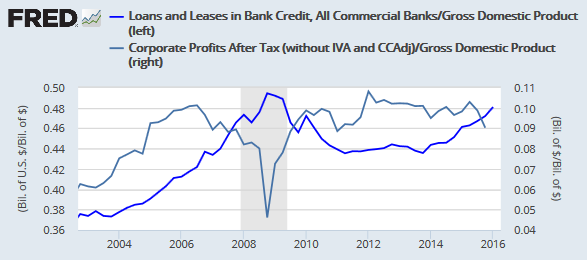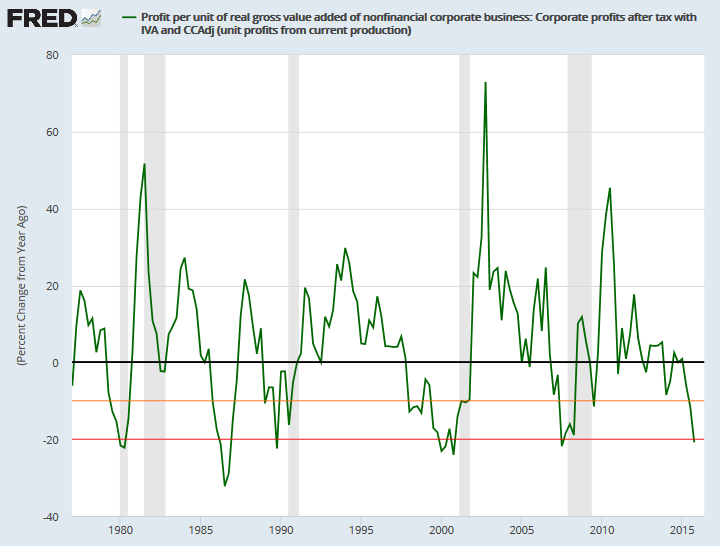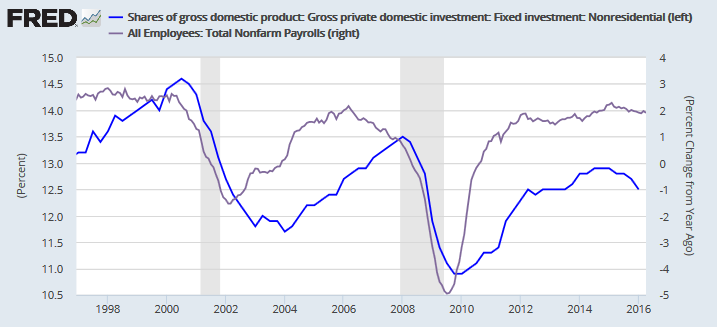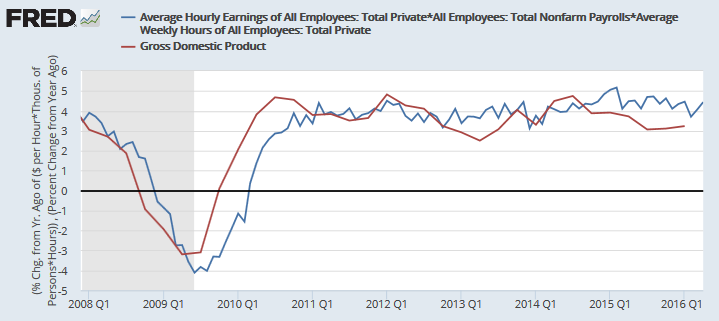The slow fuse
By Colin Twiggs
May 12, 2016 5:30 p.m. AEST (3:30 a.m. EDT)
Advice herein is provided for the general information of readers and does not have regard to any particular person's investment objectives, financial situation or needs. Accordingly, no reader should act on the basis of any information contained herein without first having consulted a suitably qualified financial advisor.
Hedge fund legend Stan Druckenmiller, founder of Duquesne Capital, recently warned of another financial crisis:
"The Fed has no end game. The Fed's objective seems to be getting by another 6 months without a 20% decline in the S&P and avoiding a recession over the near term. In doing so, they are enabling the opposite of needed reform and increasing, not lowering, the odds of the economic tail risk they are trying to avoid....."
Druckenmiller is not the only one to raise concerns about the level of debt being used to leverage growth through stock buybacks instead of for productive capital investment. While window-dressing may look good on company reports, it cannot conceal the fact that corporate debt is rising while earnings are falling.

Shrinking profit margins also warn of a down-turn.

And capital investment is falling as a percentage of GDP. Normally this coincides with a decline in employee payrolls and precedes a recession but here employment is still growing at 2 percent a year. While this continues there is room for hope.

Rather than rely on employment numbers, growth in the dollar value of weekly payrolls (total employment x average weekly hours x average hourly wage rate) offers a more accurate prediction of GDP growth. Again, there is no sign of a down-turn. So far.

Further declines in profit margins or capital investment would be cause for concern.
Past experience has taught that it takes time for economic fundamentals to filter through to the bottom line and affect stock prices. Like a slow fuse, the problem may be evident for months before the effect is felt. In 2006 the yield curve inverted but it took more than a year for stocks to fall. As Keynes succinctly put it:
Markets can remain irrational a lot longer than you and I can remain solvent.
Disclaimer
Porter Private Clients Pty Ltd, trading as Research & Investment ("R&I"), is a Corporate Authorized Representative (AR Number 384 397) of Andika Pty Ltd which holds an Australian Financial Services Licence (AFSL 297069).
The information on this web site and in the newsletters is general in nature and does not consider your personal circumstances. Please contact your professional financial adviser for advice tailored to your needs.
R&I has made every effort to ensure the reliability of the views and recommendations expressed in the reports published on its websites and newsletters. Our research is based upon information known to us or which was obtained from sources which we believe to be reliable and accurate.
No guarantee as to the capital value of investments, nor future returns are made by R&I. Neither R&I nor its employees make any representation, warranty or guarantee that the information provided is complete, accurate, current or reliable.
You are under no obligation to use these services and should always compare financial services/products to find one which best meets your personal objectives, financial situation or needs.
To the extent permitted by law, R&I and its employees, agents and authorised representatives exclude all liability for any loss or damage (including indirect, special or consequential loss or damage) arising from the use of, or reliance on, any information. If the law prohibits the exclusion of such liability, such liability shall be limited, to the extent permitted by law, to the resupply of the said information or the cost of the said resupply.
Important Warning About Simulated Results
Research & Investment (R&I) specialise in developing, testing and researching investment strategies and systems. Within the R&I web site and newsletters, you will find information about investment strategies and their performance. It is important that you understand that results from R&I research are simulated and not actual results.
No representation is made that any investor will or is likely to achieve profits or losses similar to those shown.
Simulated performance results are generally prepared with the benefit of hindsight and do not involve financial risk. No modeling can completely account for the impact of financial risk in actual investment. Account size, brokerage and slippage may also diverge from simulated results. Numerous other factors related to the markets in general or to the implementation of any specific investment system cannot be fully accounted for in the preparation of simulated performance results and may adversely affect actual investment results.
To the extent permitted by law, R&I and its employees, agents and authorised representatives exclude all liability for any loss or damage (including indirect, special or consequential loss or damage) arising from the use of, or reliance on, any information offered by R&I whether or not caused by any negligent act or omission.
